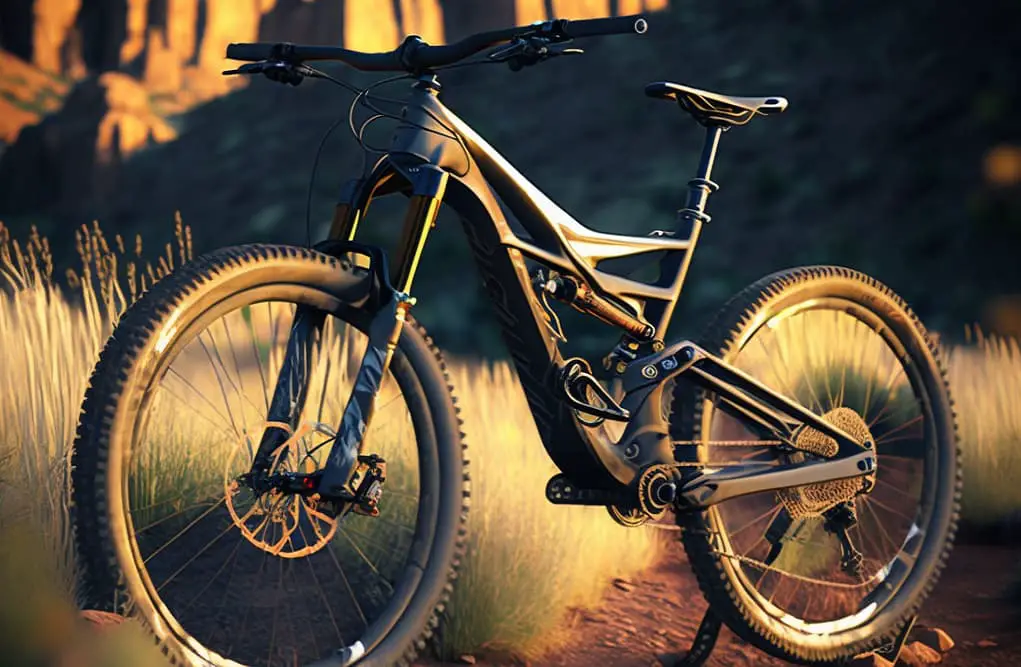Maintaining the front fork on a mountain bike (MTB) is important for keeping your ride smooth and safe. The front fork absorbs shock from bumps and dips in the trail, so it’s essential that you keep it properly maintained.

With regular care, you can ensure that your MTB’s front fork will work as designed for years to come.
In this article, we will go over how to maintain the front fork of an MTB, including inspecting parts for wear and tear, lubricating moving components, and replacing worn out parts when necessary.
By following these steps regularly, you can extend the life of your MTB’s suspension system while ensuring a safe and enjoyable ride every time.
Tools you need
To properly maintain your MTB’s front fork, you will need a few tools. You will need a socket wrench set with various metric sizes, a rag or brush for cleaning,
some lubricant appropriate for bike components (such as ProGold), and an adjustable torque wrench if the parts of the front fork are held together by bolts.
How to Maintain the Front Fork on a MTB?
Inspecting for Wear
When inspecting the front fork for wear, start by looking at all of the components for signs of damage such as cracks or scratches.
Make sure to check the seals and other rubber parts for any deterioration.
If you find any damage, it is best to replace the part immediately before continuing with the maintenance.
Cleaning
Once you’ve inspected the parts for damage, it’s time to clean them. Use a rag or brush and some mild soap to remove any dirt and grime from the components.
Be sure to pay special attention to any areas that have been exposed to mud or water. Once everything is clean, dry off all of the components with a clean cloth.
Lubricating Moving Parts
After inspecting the front fork for wear, you’ll need to lubricate all of the moving parts. This will help reduce friction between metal components and keep them from rusting or corroding.
Use a brush or cloth to apply the lubricant to all contact points on the suspension system, including the stanchion tubes, seals, and pivot points.
Replacing Worn Out Parts
Finally, if any of the parts on the front fork are worn out or damaged beyond repair, you’ll need to replace them before continuing with your ride.
Be sure to refer to your owner’s manual or contact a bike technician to find the correct replacement parts.
Once the new parts are installed, you can be sure that your MTB’s front fork is running as smoothly as possible.
Tips for Maintaining Front Suspension Fork
- Make sure that your front suspension fork is properly serviced regularly. This should include checking the seals and lubricating any moving parts as necessary. In addition, inspect the stanchions for signs of wear or corrosion and replace them if needed.
- Clean the dust wipers on a regular basis to maintain smooth operation and reduce wear. Use a damp cloth to wipe away any dirt or grime buildup, then lightly lubricate the forks with oil.
- Inspect the air pressure in your fork’s air chamber regularly and adjust it as needed for optimum performance. If you notice strange noises coming from the fork, this could indicate an issue with the air pressure and should be addressed immediately.
- Keep an eye on the fork’s rebound damping circuit, as this is essential for maintaining control over the terrain. You should also check for any signs of oil leakage from the damper unit and address it promptly before further damage can occur.
- Finally, make sure to take your front suspension fork in for regular tune-ups. This will ensure that it is performing as expected and should help to prevent any major issues from developing over time. Taking the time to properly maintain your front suspension fork will go a long way towards prolonging its life and keeping you safe on the trails!
FAQ’s
Q: How often should I inspect the front fork of my MTB?
It is recommended that you inspect your MTB’s front fork before each ride to ensure it is functioning properly. Additionally, you should perform a more thorough inspection every few months or whenever you notice any issues with your suspension system.
Q: How can I tell if my front fork is worn out?
If your front fork is worn out, you may notice a decrease in performance, such as less shock absorption or a rough ride. Additionally, you may find cracks or scratches on the components of the suspension system when inspecting it. If any of these signs are present, it’s time to replace the worn out parts.
Q: What type of lubricant should I use when maintaining my MTB?
The best type of lubricant to use on your mountain bike components is one that is specifically designed for bike components, such as ProGold. This type of lubricant will help reduce friction and protect your bike parts from wear and tear.
Final Words
By following these steps, you can make sure that the front fork of your MTB is in good condition and functioning properly for years to come! With regular care and maintenance, you can keep your mountain bike running smoothly and enjoy a safe and enjoyable ride every time.